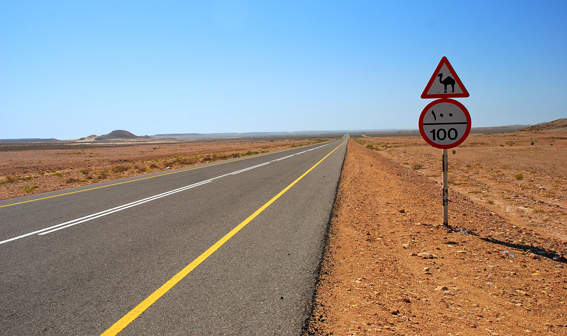
Muscat is 1,011 kilometres from Salalah, a journey that takes slightly less than a couple of hours by air.
Those of us who love the road, though, it is a memorable nine-hour journey with just you and your vehicle, with the sky above and the earth below.
To ensure it stays memorable, though, Lifestyle caught up with the engineers who worked in the town of Haima, halfway between the capital and the Dhofar region for tips to ensure their journey was made easier.
Stock up on fuel
The last thing you want is to be stranded on a highway in the middle of the desert, not knowing when (or if) the next vehicle you can thumb a lift from is coming. After Nizwa, the next fuel station is in the town of Adam, a good 56km away.
After that though, there’s a good 100km separating one town from the next, and the desire to unleash the full power of your ride might be a very tempting one, but we wouldn’t advise you to do that as you might run out of juice before then, and standing on the side of the road does not sound like a very nice option. The engineers in Haima go one step further: They have in-car speed monitoring systems that warn them once they’ve crossed a certain limit.
Make sure your engine is cool
Temperatures in the middle of the desert can rocket up to a whopping 50 degrees so remember that when you stop at the next town, you’re not just giving yourself break, but your car as well so that it doesn’t break down in the middle of the desert.
Adam is the last major town before you get to Thumrait, your penultimate stop before you reach Salalah. It would not be a bad idea to check your engine temperature and maybe buy some coolant at a garage there.
Give your tyres a couple of kicks as well, to ensure everything is sorted down there, and perform any repairs that are necessary: A stitch in time saves nine, after all.
Stock up on food and water at every station
Your car does need fuel, but you do too. It’s not the heat, but dehydration that is your biggest enemy out in the desert. A lack of food and water on the road can lead to blurred vision, headaches, nausea, and even fainting spells, which are extremely dangerous, not just for yourself, but anyone else on the road as well.
The engineers in Haima are constantly tracked by GPS when they are on the road, and have to inform their superiors of their visits via a journey planner, which details their time of departure from their base of operations, time of arrival at the site of inspection and distance between the two locations, so that they can be easily found in case of emergencies.
Plan your route
Print off a route map with detailed instructions before you set off on your journey, and make sure you know the route you’re taking. Compare notes with people who’ve made the journey before and ensure you don’t get lost, because finding your way back onto the main road isn’t the easiest, even with your in-car GPS navigation system.
Make sure you’ve got a healthy balance on your phone and note down a few emergency numbers and the locations of emergency services in the area if you need to.
Stay well rested
The engineers in Haima work on rotation so that there is no burnout while on the job. If you need a break from the road, pull into the nearest town and spend an hour or so decompressing at a local cafeteria. Better, check into a hotel for the night. The motel in Al Ghaftain do a mean tandoori roti and it does sound like a great excuse to grab some R&R. You can also grab some shut eye for the night at the Haima Tourist Hotel, before hitting the road once again in the morning once you’ve recharged your batteries. Follow these tips and your journey through Oman’s deserts will be made a lot easier. We wish you a fun (and safe) time out on the roads. —[email protected]